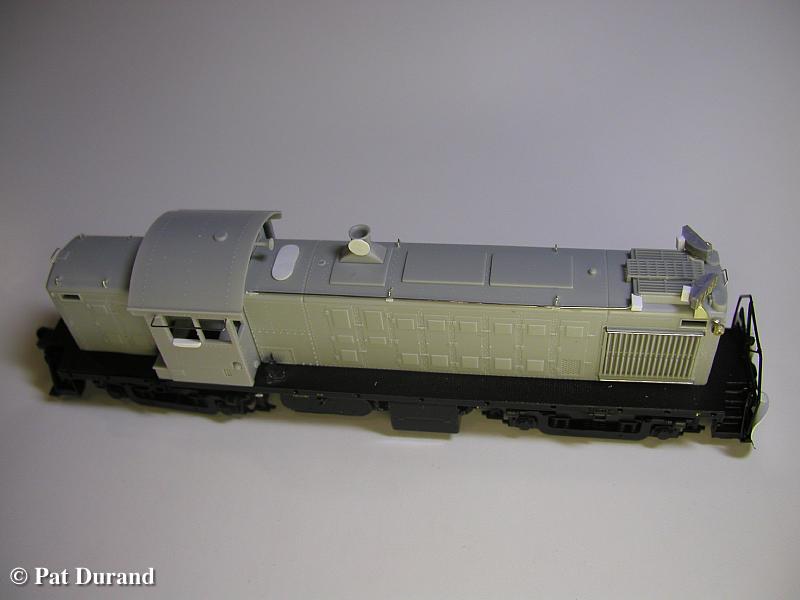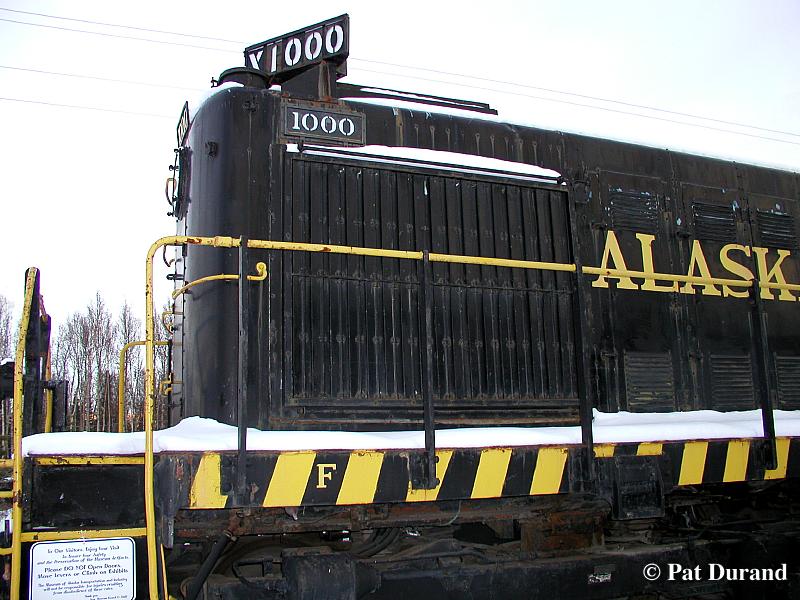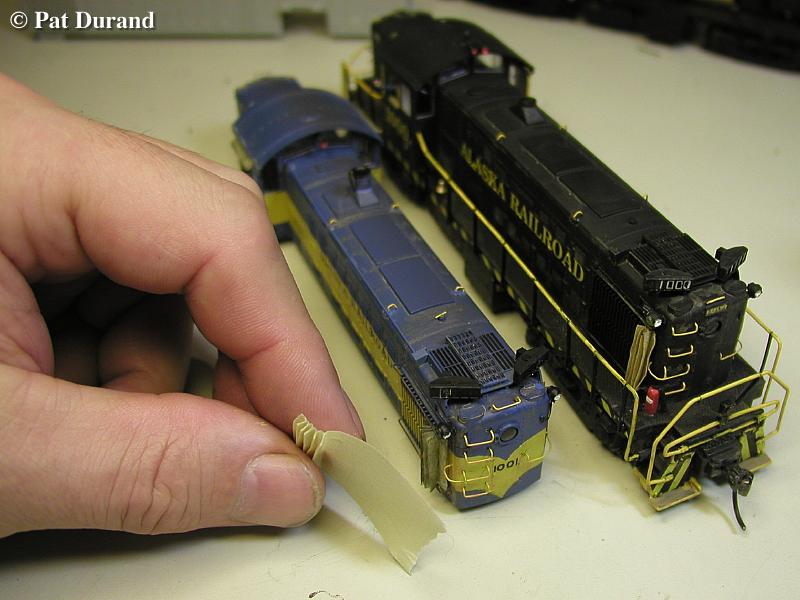Home Made Radiator Curtains
Article reposted by the generous authorization of Pat Durand's son Casey.
Keeping diesel engines warm in Alaska's severe winter weather was a constant battle. You will notice weather curtains mounted over most radiator intakes on early units, Alco S2, RS1, RSD1, 1070's, etc.

These locomotives had manually operated louver controls to close and open the shutters. On the Alcos the rod ran through pipe supports along the top right edge of the long nose from the engineers station to a box at the right rear corner of the top fan grill.

In warm weather the shutters worked, sort of. In cold weather blowing snow and ice would foul them, open or closed. Canvas curtains were installed to provide some protection. This was a minimal thermal barrier, but allowed some radiated heat to keep the snow and ice melted behind it and deflected new accumulations.
The curtains were fabricated from heavy duck canvas, or in the early days an army pup tent half. Remember the heritage of the Alaska Railroad! They were mounted to 3/4" pipe hangers top and bottom, using large hog rings through grommets in the canvas.

Modeling these involves installing some bent wire "pipe hangers" corner to corner at the top and bottom of the radiator housing. The canvas is manufactured by folding masking tape back and forth on itself to create draped canvas. Cut the finished folded section to a friction fit between the top and bottom "pipe hangers". Add a little weathering, tear some holes in the "canvas" if you want and it gets convincing. In the summer these were tied back at the front corner.
Awnings over the side cab windows were also made of canvas. These were attached just below the cab eve and stretched over a pipe frame that could be hinged up or pulled down to protect an open window. Use ACC to "seal" the adhesive side of the "canvas" masking tape and attach it to the wire frame. DO THIS BEFORE YOU ADD WINDOW GLAZING!
Try it, you'll like it! When you figure out how to do the hog rings, please let me know. Patrick J. Durand
[Editors note] Orginally posted on https://alaskarails.org/ARR-modeling.html

